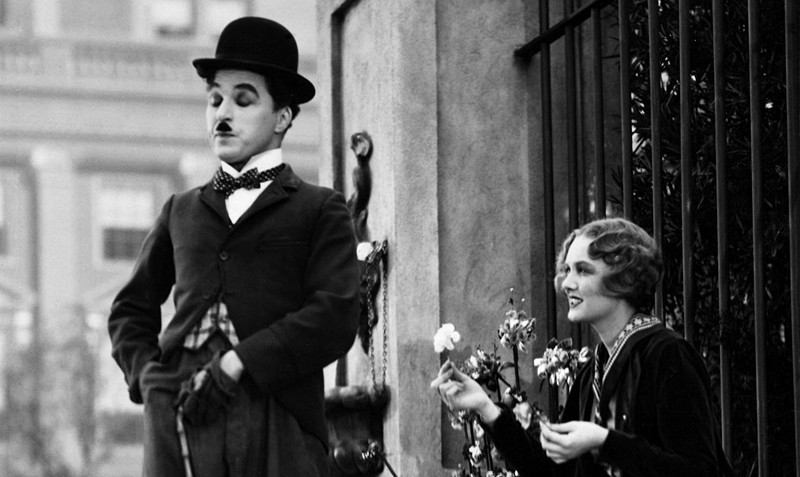
“Naturalness is the greatest requisite of comedy. It must be real and true to life. I believe in realism absolutely. Real things appeal to the people far quicker than the grotesque. My comedy is actual life, with the slightest twist or exaggeration, you might say, to bring out what it might be under certain circumstances.”
– Charles Chaplin
Since the time film was perceived as an attraction which happened in the first years after its initial development which occurred in 1895, it embraced comedy as channel of messages and more importantly a via for connecting with the audience.
Naturally, the development of comedy films went through various stages, being it primarily and most popularly, influenced by vaudeville and its use of slapstick, as well as, burlesque elements. With that being said, silent films from its early days up to the 1930s with the introduction of sound, had a great screen presence and were the most popular genre among audiences.
Due to that comedies employed a wide range of techniques, themes and, likewise, tones. They were mostly short and sharp, but as some films presented almost childish gags and were very flat, other were often bold… too bold.
Accompanying and perhaps boosted by the technological and storytelling developments that occurred throughout the 1910s and 1920s, comedies started to engage in all kinds of themes, from drug use to abortion, prostitution, homosexuality, miscegenation, crime or intense moments of physical violence.
Women were often depicted as the motors of conflict because they were either extremely promiscuous or on the basis of clashes among men, mafia wars and so on. Being the effects of their seductiveness and mischievousness over men highlighted in many films. Men, on the other hand, were depicted as either outsiders – gangsters, drunks, forgotten working class men, homosexuals – or distinctive society members – bankers, lawyers, policemen, entrepreneurs – owners of a weak character and thus, serving as a canvas to paint all kinds of flaws.
Naturally, given the context, racial stereotypes were often applied and abused of, black people besides being always lower class members (usually servants), were portrait has having some sort natural ‘handicap’ – either with speech, movement, quotient of intelligent – that incapacitated them before the Caucasian man. Examples of such are encountered in many of the early film appearances of Stepin Fetchit.
Being this set of characteristics applied to films produced during the so-called period of Pre-Code Hollywood. However, as the Depression hit on the country the distastefulness felt for many years towards these Hollywood objects of promiscuity became stronger and in 1929 religious groups such as the Catholics and associations of housewives were responsible for the enforcement of the MPPC (Motion Picture Production Code) which basically was a set of rules that the film industry should apply in its products in order to maintain morale, thus transforming films in what the country needed the most – escaping objects which provided the people with boosts of optimism. (However, only 1934 were the Code’s rules and regulations fully embraced and applied in the industry.)
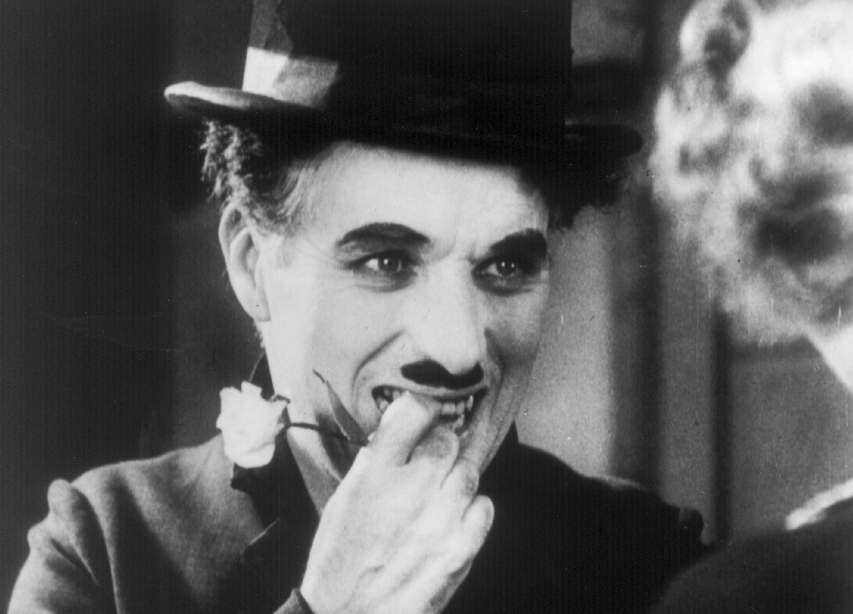
Other interesting and popular objects of comedy from this period embraced animation. Mainly during the 1920s and 1930s – even though the industry dates back to the 1910s – a great number of short animated films featuring Betty Boop, Mickey Mouse or Oswald the Lucky Rabbit became quite popular attracting great crowds. Production of these films was led on an early stage by Bray Productions which was later dominated by the Walt Disney Animation Studios.
On the field of ‘real life comedy’, a great number of studios took different leads: Mack Sennett’s Keystone studios (responsible for growing the careers of Harry Langdon, Roscoe Arbuckle, Bing Crosby and Charlie Chaplin among many others), Hal Roach’s studios (which produced many Harold Lloyd comedies and where Laurel and Hardy started their career), Columbia Pictures (responsible for major landmarks in the careers of Frank Capra, Jean Arthur or Cary Grant and later The Three Stooges, being known as one of the major houses of screwball comedy), Paramount (due to its film productions featuring many vaudeville acts such as W. C. Fields, the Marx Brothers).
People who made great use of physical humour and all the slapstick elements that, with the coming of sound, embraced it because of the possibilities it brought on the use of verbal humour – very differently from City Lights’ director Charlie Chaplin who was dismissive about it and famously said “give the talkies three years, that’s all.”
Chaplin had in 1918 signed the most profitable contract of his entire career, a million-dollar contract with First National Pictures for which he conceived A Dog’s life in 1918, The Kid and The Idle Class three years later and in 1922 Pay Day.
This contract allowed Chaplin to establish his own studios which for its part allowed the artist to have a new degree of creative control over his pictures, being this the principal reason why City Lights remained a silent film (despite its use of soundtrack and effects), because as he retained control Chaplin didn’t have to bend over a studio’s will and determination. He was, for the most part, his own boss, therefore, he produced films according to his own ideals, aesthetics and preferred techniques. Just like an auteur.
And within this environment, Chaplin wrote, directed, produced, starred, edited and composed the music for his silent masterpiece City Lights – made in 1931 which famously told the story of a little tramp who manages, through the aid of an eccentric millionaire, to cure the girl he has fallen in love with from her condition. Blindness.
1. The film’s structure and its use of comedy
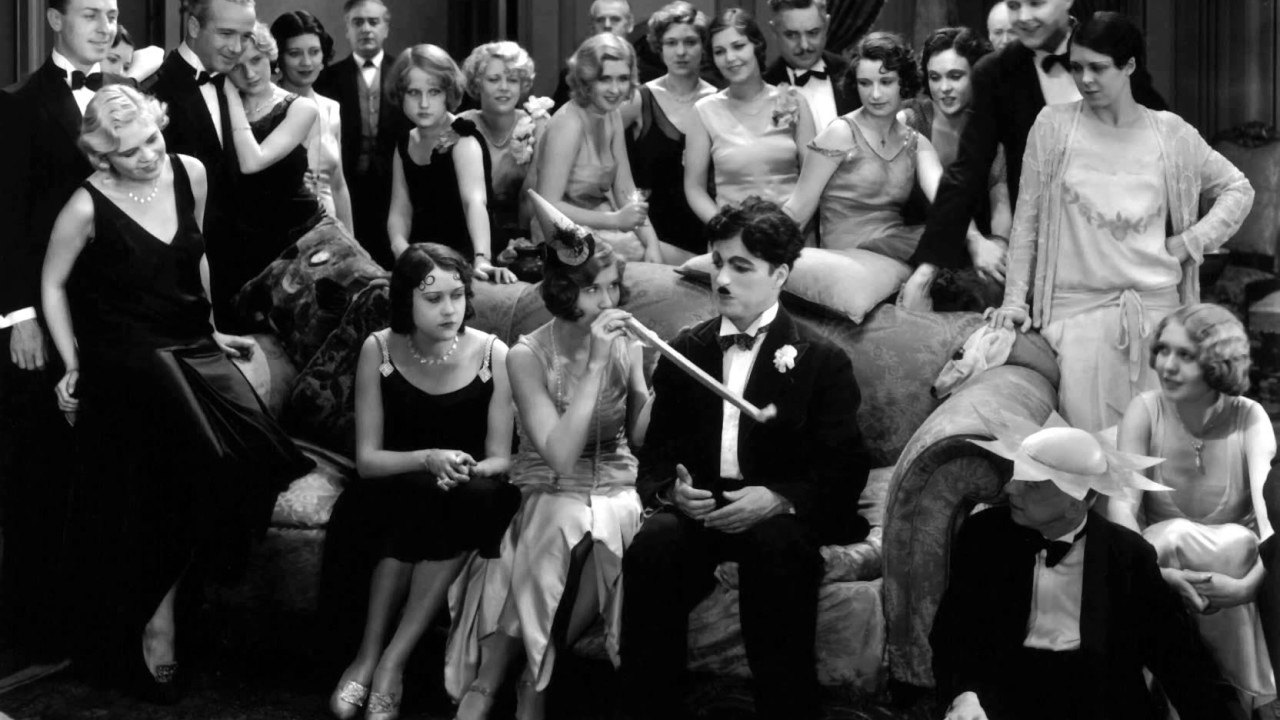
When talking about a film’s structure, there is a variety of elements that one has to consider besides the plot and the performance itself. In Chaplin’s case, as a comedian, he of course dealt with a number of components which the average drama often didn’t feature – elements of comedy.
As stated before, during the 1920s and 1930s, comedy aggregated a great number of techniques that came from vaudeville and music hall numbers, later known as slapstick comedy. Slapstick dealt first and foremost with the ideal of physical comedy. And in order to achieve that performers would often recur to chases, falls, funny expressions, throwing pies, the list goes on.
However, Chaplin’s use of these elements was contained and was intelligent and, more importantly, he had an unmatchable sense of timing to introduce them within the story he was telling, therefore, naturally, the structure of City Lights is one to be praised by the way it conjugates the plot – a tramp who falls in love with a blind girl and finds a way of helping her through the aid of a wealthy drunkard – with comic sequences – often when the tramp and the millionaire are together – and specially with pathos (appeal to emotion) – the sequences where the tramp meets the blind girl and, logically, the film’s finale.
Chaplin’s comic inserts are ingenious mainly because they do not happen just to please the audience but also, and more importantly, because these inserts mask the director’s intentions. It’s not a coincidence than most of them happen when the tramp finds himself surrounded by society’s ‘prominent figures’.
Examples of these situations happen in the film’s initial sequences where the tramp finds himself ‘attached’ to a statue which is the motive of a grand inauguration, thus, ‘defying’ the presence of authority and the people who are part of the bureaucratic power machine, whom we see giving great speeches but listen distorted voices and other sound effects instead of their real voices (though this can also be seen as Chaplin mocking the talkie fever that had by this time caught everyone in the film industry).
After this we have other comic moments during parties where the tramp starts eating confetti instead of spaghetti or later when he swallows a whistle which causes great distress to the other guests, as well as, to the gentleman performing.
Thus, it is fair to conclude that, on a first hand, Chaplin’s comic gags are socially conscientious and deal with what is external to self. Nevertheless, on a second plan, the director also made use of these moments of comedy to address issues connected with the self, for instance, sexuality which is an idea worked during the moment when the tramp is admiring a statue of a naked woman in a shop’s window, but of course, the idea of the tramp’s inner desire is diverged or perhaps masked with the introduction of motive for comedy – a hatch on the floor behind the tramp which is constantly going up and down without him realizing the danger of falling.
2. The Chaplin Touch
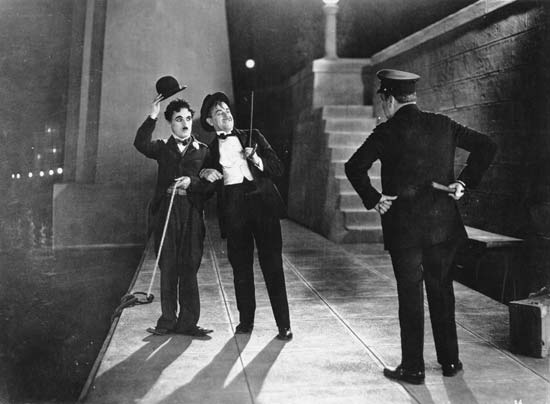
The Chaplin Touch is the expression invented to address the set of characteristics featured in many of the silent master’s films. Such group includes Chaplin’s use of the pantomime, melodrama, characters (particularly, the little Tramp), pathos, social satire and visual simplicity which are the focus of this topic.
The Chaplin Touch in its purest form equals City Lights. And such a statement is possible due to the production methods the little tramp adopted and the freedom he enjoyed to apply them. It is remembered today as Chaplin’s most popular and best film perhaps because it is a symbol of all his work combining the different components Chaplin mastered throughout his life.
So, to begin with, the focus travels to Chaplin’s use of the Pantomime, which derived from the Italian Commedia dell’arte, being it a sort of comic musical number that incorporates dance, grace – gracious movements –, physical comedy, mime and in later approaches singing and verbal humour.
To describe pantomime is also to describe the physical approach Chaplin took on his cinematic characters, thus, as City Lights unfolds, it is possible to detect all the graciousness, rhythm and coordination of pantomime in the little tramp.
Next on the list is melodrama which is directly connected with the use Chaplin does of characters. Melodrama is a genre that more than others feeds on the characters’ presence and profoundness, and here again is Chaplin’s masterly sense of timing and balance. Contrary to other director who emphasized melodrama through music, over acting and tragedy, Chaplin achieves the same depth yet through a different use of such elements.
Instead of emphasizing life’s pain, Chaplin eases it, to show us how ironic, how pathetic drama is and how uncontrollable are destiny’s and life’s course. And this connects with Chaplin’s use of characters which is thoughtful, intelligent yet quite simple. His characters are generically speaking type characters, symbols of those forgotten by society, of human futility, harshness or coldness, of human desire, compassion, affection and attraction. Resuming, human condition.
And in City Lights, this is more apparent than in other films. The characters chosen to feature in this drama are those frequently overlooked by society and in every sense loners, thus serving as basis for real drama instead of a pair of lovers weeping over their superficial problems.
The girl is blind and belongs to an inferior social class who is frequently dismissed either by others either by the government whose aid is insufficient. The millionaire, amounts to nothing despite all his wealth. He is a loner and as seen in the film attempts, under comic circumstances, suicide more than once.
And of course, the tramp, a low-life whose value to society is seen as purely inexistent and like pointed out by critic Roger Ebert: (…) his only friendships are with people who don’t or can’t see him: with a drunken millionaire who doesn’t recognize him when he sobers up, and with a blind flower girl. His shabby appearance sets him apart and cues people to avoid and stereotype him; a tramp is not … one of us. Unlike the Keaton characters, who have jobs and participate eagerly in society, the Tramp is an outcast, an onlooker, a loner.
In conclusion, we perceive that Chaplin’s social conscientiousness, his appeal to emotion, while building moments of social satire, all deliberately done under a visual and formal style contribute to an universalization of his films and, consequently, of the cinematic language he used. So, it is fair to conclude that much of the greatness and the importance of City Lights is because of its universality – which breaks all language, all social and cultural barriers.
3. The combination of sound and silent film elements
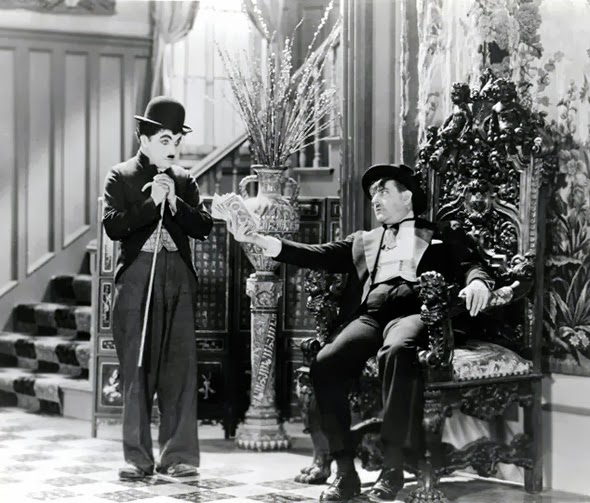
It is estimated that City Lights’ production had a duration of two years and eight months (with actually shooting happened over more than 190 days) and has stated before during this period which corresponded with the peak of the Great Depression, sound was introduced to films, better said, sound recording.
Despite his personal disbelief in sound, Chaplin was aware that moviegoers seemed to be enchanted by it even if, in those days, the quality was poor. Perhaps for that reason Chaplin decided to insert more sound elements into the film’s silent structure aside from the usual ‘mickey mousing’.
So besides marking the first time Chaplin ever composed a score applying on a film, City Lights is also notable for its use of sound effects. Not only because they served as an accompaniment to the action taking place but also as elements that increase the comic appeal of a given situation and also serve as ‘comments’ or reflections on that same action/situation.
For instance, in the film’s opening when the ‘illustrious’ people give speeches the director chose to use distorted voices similar to those used cartoons which obviously emphasizes the ridiculousness of those people. Thus, sound acquires a rhetorical purpose – in which its presence means to comment or make a remark about something; serving in this particular situation as another element that serves Chaplin’s idea of refusal/contempt for authority.
Naturally, this refusal of adding voices and a complete soundtrack (ambience, object sounds, action sounds…), combined with characteristic elements of the silent film (intertitles, tableaux, detailing the drama or acting techniques that emphasized body language) results in the maintenance of a certain degree of the film’s universalization because the tramp can be from any country and this story is an everyday life drama that can happen anywhere, therefore, it’s possible that the film’s appeal to the general audience hadn’t been so much if it had been if it had been a sound film.
4. It is an everlasting landmark in editing and timing
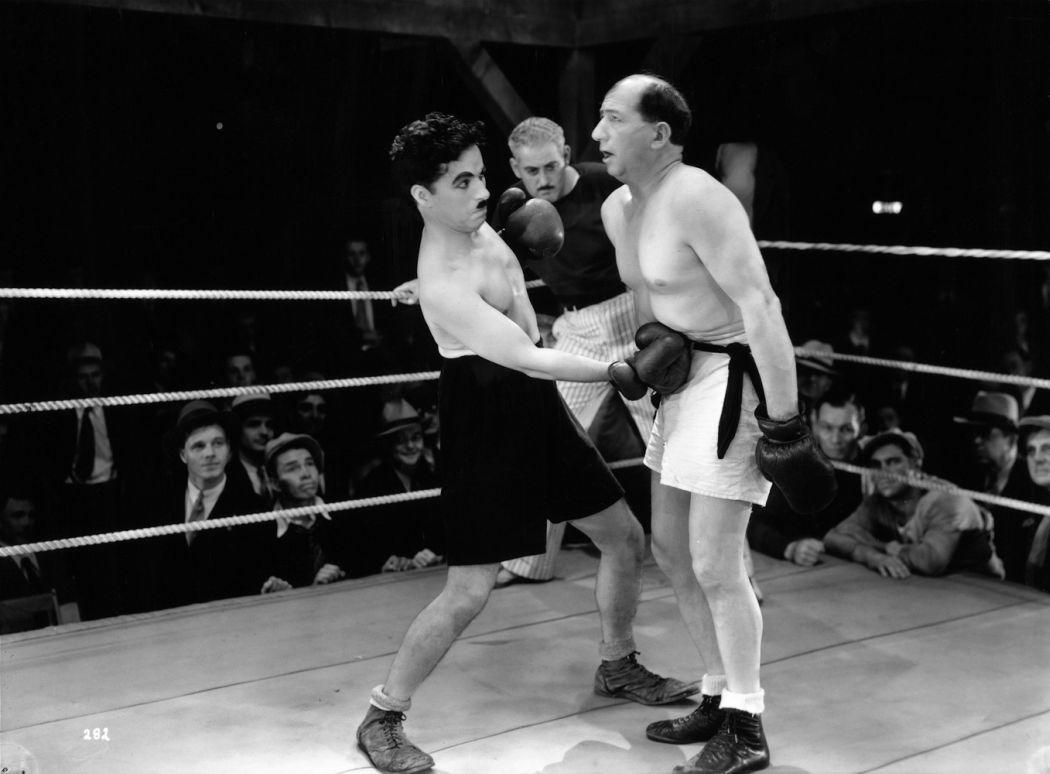
As emphasized before one of Charlie Chaplin’s most praised abilities was precisely his unmatchable sense of timing. But when it comes to timing it not only concerns the film’s structure in terms of plot and events, but also in terms of film editing.
As pointed out by critic Roger Ebert: “(…) there are the bawdy moments, as when the Tramp, working as a street-sweeper, avoids a parade of horses only to encounter a parade of elephants; and when the millionaire pours bottles of champagne down the Tramp’s pants.
Chaplin was a master of the small touch, the delayed reaction. Consider the moment when he goes to the blind girl’s house to give her the money for an eye operation. He has prudently stashed $100 in his pocket for his own needs, but after she kisses his hand he shrugs, reaches in his pocket, and gives her the final bill.”
In his words, Ebert highlights two essential elements – besides those already mentioned – in Chaplin’s conception of timing, first, that which concerns editing, and second, that which concerns the performance.
When it comes to the first, timing in editing, much is there to be said but one thing is certain, the importance of Chaplin’s editing resides not on his ability to create great montage sequences combining great camera movement but rather on his ability to mask this all, to maintain a simple and sharp editing style – and while to many this might not seem important to mention since probably 95% of studio system products used techniques of the so called transparent editing style, we must remind those that Chaplin was Griffith’s contemporary beginning his filmmaking activity around mid-1910s before the ‘real’ establishment of a studio system and its conceptions which can be traced back to the mid-1920s .
With that being said, City Lights comes as one of the greatest symbols of Chaplin’s editing style which relies more on character’s activity within the frame and to the action’s logic and continuity into the next frame.
Thus, Chaplin should be given credit as being a pioneer, specifically in comedy films, of the establishment of a ‘transparent, continuity promotional and emotion appealing editing style’ (if such denomination makes sense) and the generalization of the use of its techniques – match on action, flashback, diegetic and extra diegetic sound, establishing shot and the list goes on.
So, it is fair to add in this explanatory text the words of Preston Sturges – who directed many great and popular comedies during the 1940s for the major studios – about film editing.
“There is a law of natural cutting and that this replicates what an audience in a legitimate theatre does for itself. The more nearly the film cutter approaches this law of natural interest, the more invisible will be his cutting. If the camera moves from one person to another at the exact moment that one in the legitimate theatre would have turned his head, one will not be conscious of a cut. If the camera misses by a quarter of a second, one will get a jolt.
There is one other requirement: the two shots must be approximately of the same tone value. If one cuts from black to white, it is jarring. At any given moment, the camera must point at the exact spot the audience wishes to look at. To find that spot is absurdly easy: one has only to remember where one was looking at the time the scene was made.
About performance timing. It is a notion dependable of editing timing, however, that can’t be explained through words because it is something of experience, of observation which Chaplin learned even before his introduction to the filmmaking business, in his times in the theatre, vaudeville and music hall. So, the best is to watch a sequence of City Lights to better understand what it’s meant by timing in a performance.